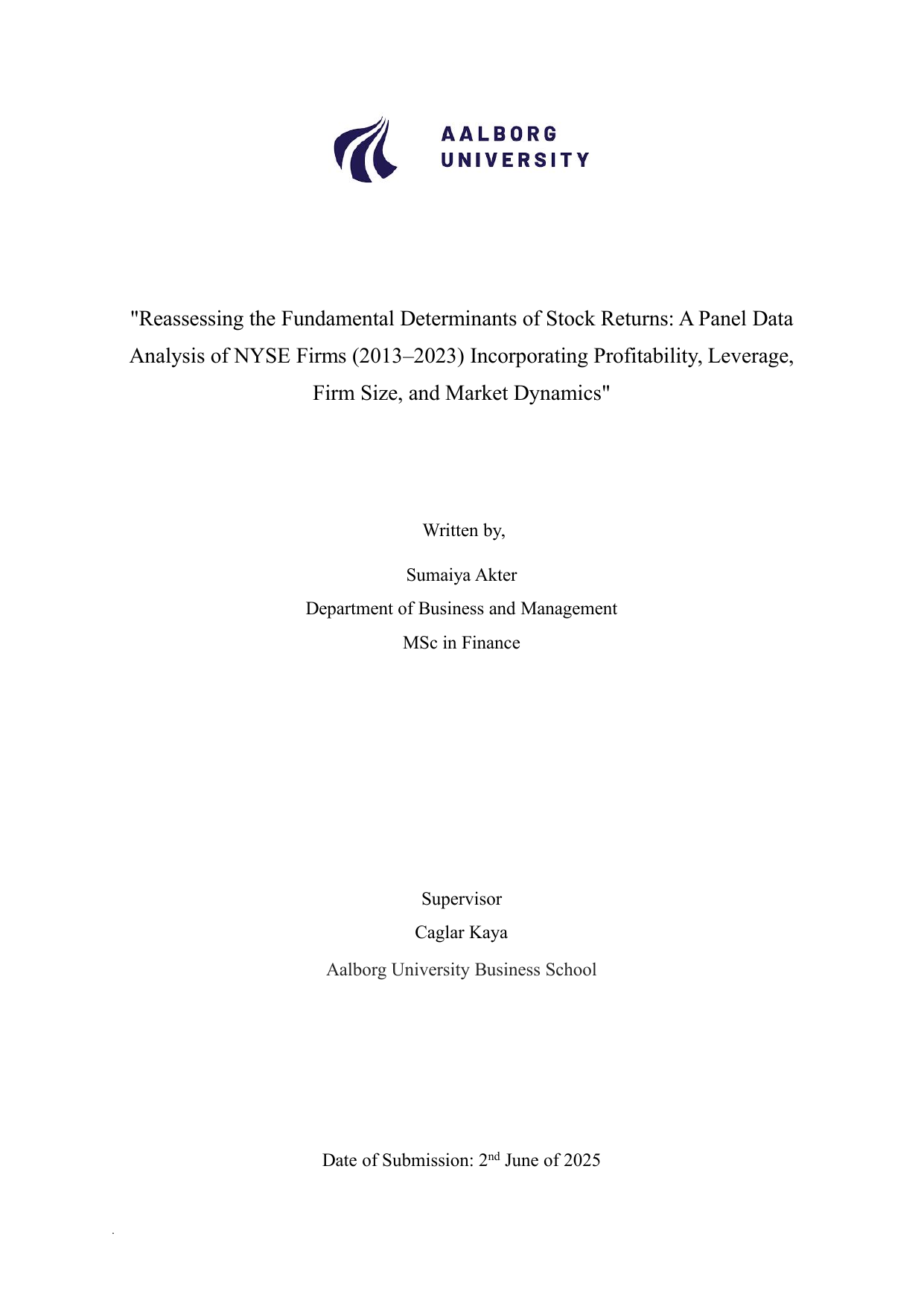
Reassessing the Fundamental Determinants of Stock Returns: A Panel Data Analysis of NYSE Firms (2013–2023) Incorporating Profitability, Leverage, Firm Size, and Market Dynamics
Translated title
Reassessing the Fundamental Determinants of Stock Returns
Author
Term
4. semester
Publication year
2025
Submitted on
2025-06-02
Pages
47
Abstract
This study examines the primary determinants of stock returns for companies listed on the New York Stock Exchange (NYSE) from 2013 to 2023, emphasising the influences of leverage, profitability, business size, and market-wide fluctuations. Utilising a panel dataset of 330 enterprises across various industries, this study applies fixed effects panel regression models to address unobserved heterogeneity at the firm, time-based, and industry levels. Key financial indicators—such as total debt-to-equity (leverage), return on equity (ROE), and total assets (serving as a proxy for firm size)—are adjusted to reduce skewness and outliers using winsorization and logarithmic transformation. The market return is utilised as a control variable to separate systematic effects. The findings demonstrate a positive and significant correlation of stock return between profitability (ROE) and market return, indicating that more efficient and higher-performing enterprises generate greater investor returns. The size of a firm exhibits a negative correlation with returns, consistent with the "size effect" identified in previous studies. Nevertheless, leverage does not demonstrate a uniform or substantial correlation with returns across all models. A robustness check that excludes financial firms verifies the overall stability of these linkages. The results endorse multifactor asset pricing theories, emphasising the significance of firm- specific fundamentals in elucidating return variability beyond market risk. Diagnostic tests verify the existence of heteroskedasticity, which is mitigated by employing robust standard errors clustered at the firm level. Multicollinearity is minimal among the variables. This research enhances existing models by incorporating firm, period, and industry fixed effects, providing a more refined comprehension of return determinants in a dynamic market context.
Documents
